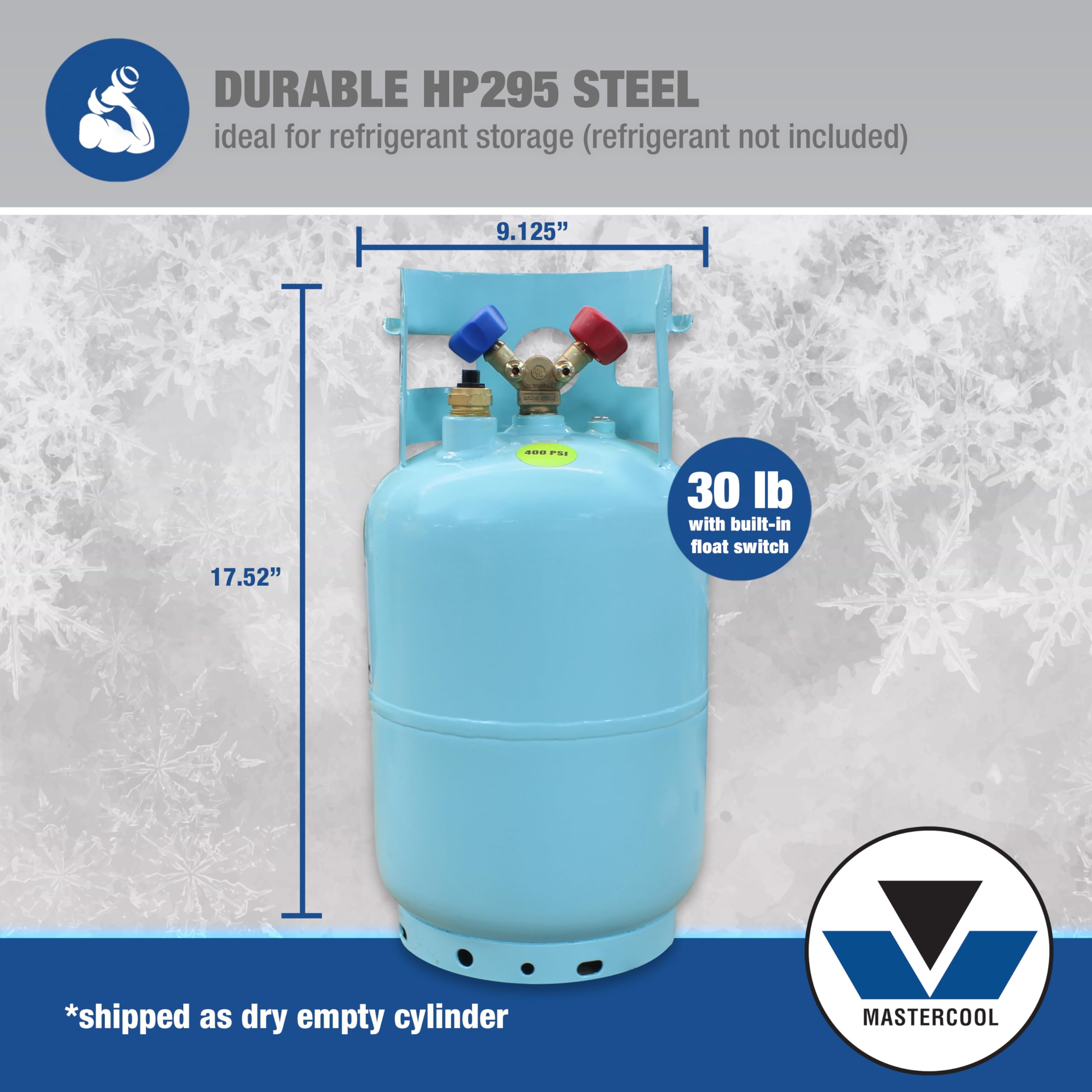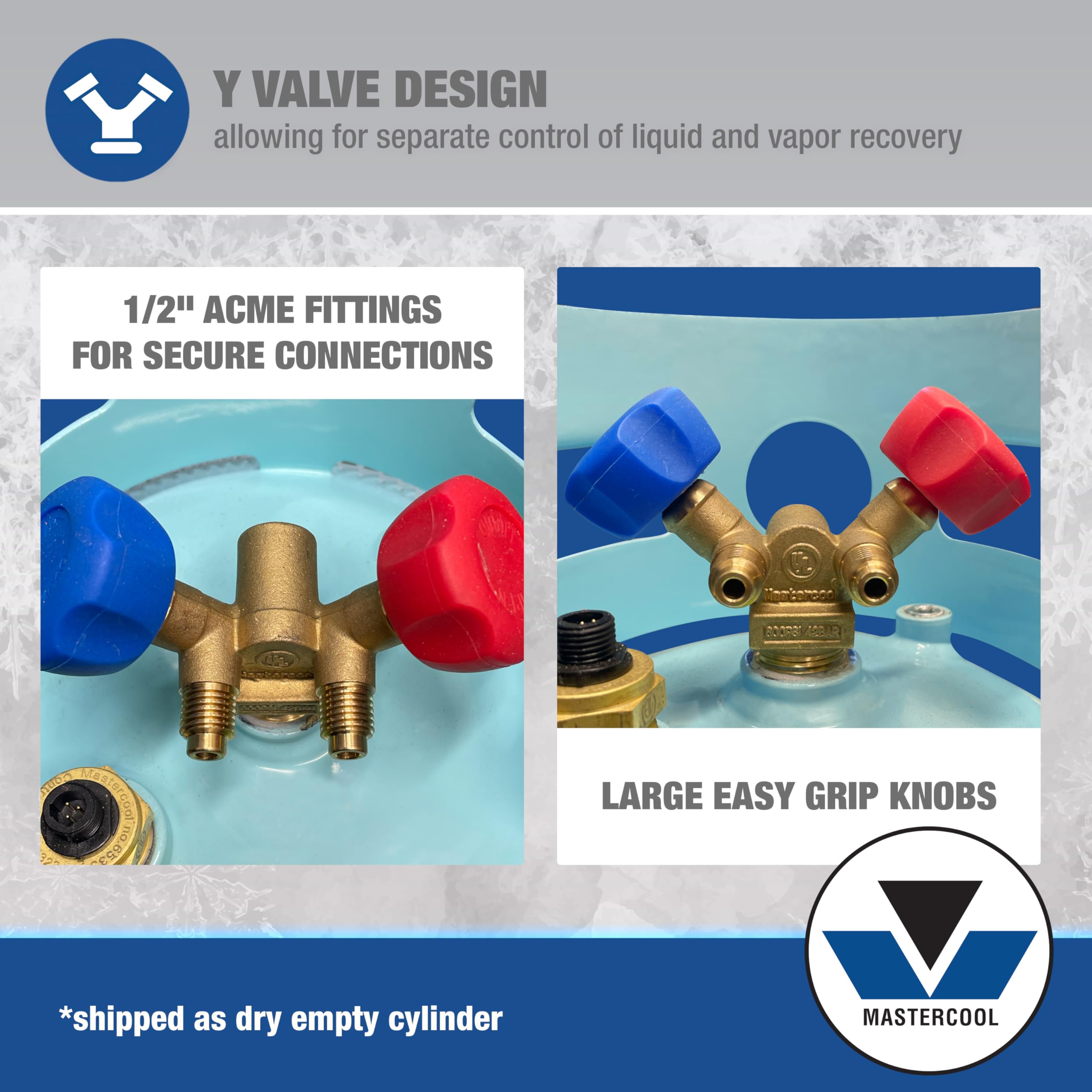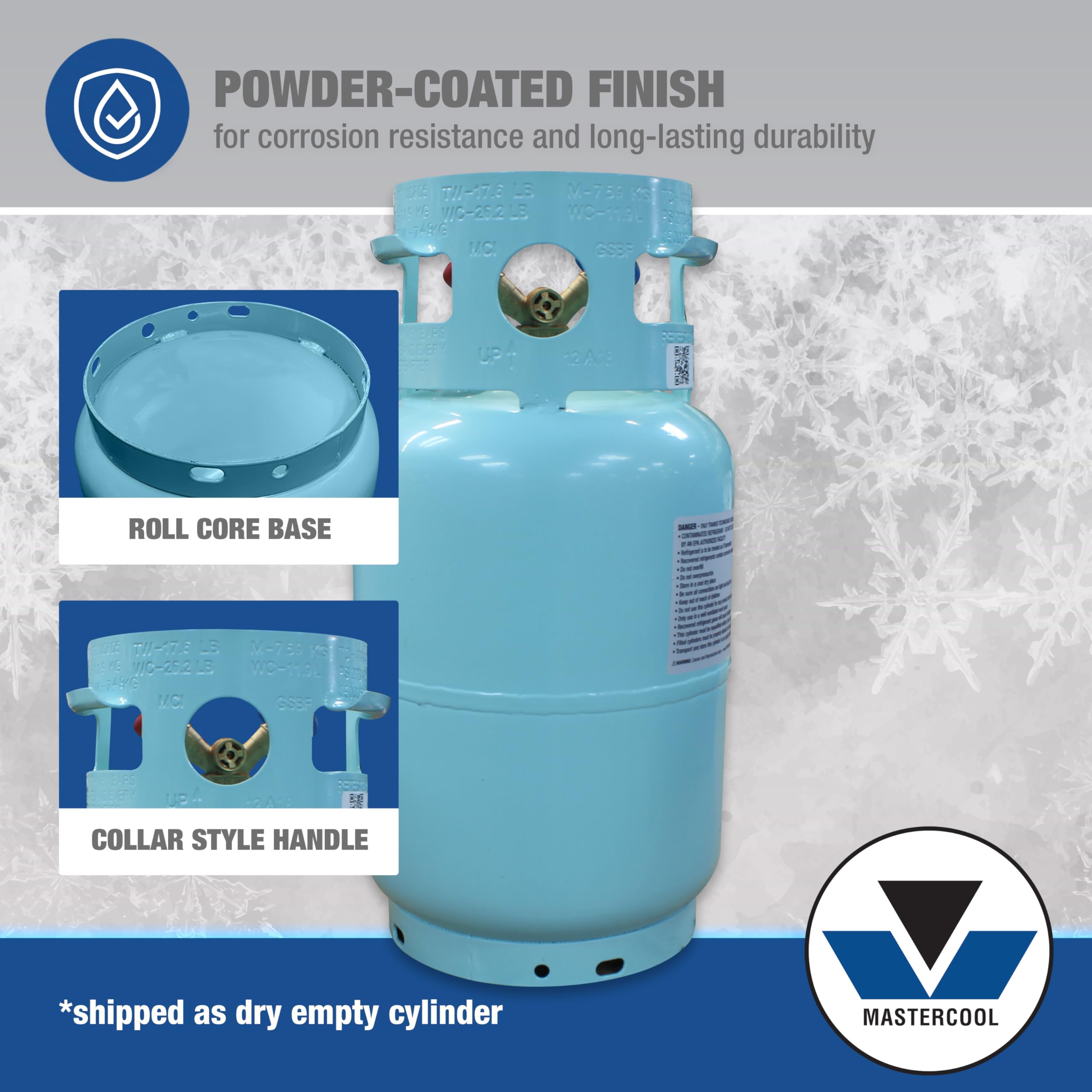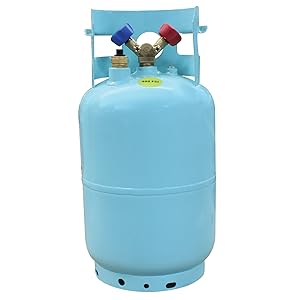






🛠️ Recover smarter, safer, and faster with Mastercool67010!
The Mastercool67010 is a 30 lb refrigerant recovery cylinder crafted from durable HP295 steel, featuring a built-in float switch for automatic 80% shutoff. Its Y-valve design with 1/2" ACME fittings allows separate liquid and vapor recovery, enhancing efficiency and safety. Compatible with all common refrigerants and certified to DOT and CSA standards, this USA-assembled cylinder ensures reliable, professional-grade refrigerant recovery.




| Manufacturer | Mastercool |
| Brand | Mastercool |
| Model | 67010 |
| Item Weight | 19 pounds |
| Product Dimensions | 18 x 10.5 x 9.5 inches |
| Item model number | 67010 |
| Exterior | Steel/ brass |
| Manufacturer Part Number | 67010 |
| Voltage | 12 Volts |
G**N
This is an excellent tank for the price!
I know that this is lower in cost than most of the other available recovery tanks you see sold, but that does NOT mean in any way that it is lower quality or value. This is as good as any tank I have ever seen or used. Small, clean, well made. If there were anything about it that is not up to that standard, it would be the chincy plastic strip stuck around the top handle rim.... it is really out of character when you consider this unit as a whole too. This unit has excellence all over it, then they put this bit of crappy trim, around the top of the handle/valve protector ring: it didn't actually need it anyway, but I sort of like it there so I took it off (easily slips right off and would never stay their anyway) and filled the slot with clear silicone, then I stuck it back on the rim so that it will remain their a bit longer. No big deal. :-)I do NOT think that anything will disappoint you if you buy this product and save some money doing so. Enjoy.
C**R
Great Recovery Tank
Used this to recover the refrigerant from my truck. Worked very well!
W**P
Cannot Go Wrong
Everyone seems to go for the huge or bigger brand named products when Mastercool is also up to par with quality as well, and in my opinion just as good at a much lower price! I do not see how anyone else's recovery tanks could be any better built than these! Very solid tank, good valves and it meets the requirements which says alot about their quality! When you stop and think about all the freon sold in disposable tanks that are made according to federal and state requirement guidelines to contain the pressure of the gas that they hold and are completely safe! How can a recovery that's made from what seems to be much heavier metal, both in weight and strength be inferior to a gas that comes sold in a much thinner and lighter tank? In refrigeration equipment, quality is always a must and I have to say that this tank meets if not exceeds the kind of quality you would expect for years of recovery and at a lower price than most! You cannot go wrong! 5 stars and no less!
C**R
CAN'T BEAT THE PRICE
I've read the other reviews and just keep scratching my head. If the tank has non-condensibles from the factory you must boil them off with a good vacuum pump. And leak check prior to first use. That is standard acceptable practice in the refrigeration field. Just like the system you are working on. You must always vac and leak check any new work prior to filling with refrigerant. If someone got a leaky one from the factory just swap it out for another. I've bought the most expensive tanks available from the supply house and had the same problems noted in these reviews. It happens. I once installed a brand new oil storage tank on a dual-fuel system and discovered a leak in it while being filled. It happens. It's rare. But it happens. At least on a refrigerant recovery tank you can check for leaks prior to using it, unlike the oil storage tank I mentioned. A good vacuum pump should be able to vac to at least 500 microns of non-condensibles which is acceptable for all refrigeration work I'm aware of. If you are using a compound gauge look at the reading below zero when vacuuming. It should go down to at least 28 inches of mercury. (Vacuum can be measured in inches of mercury). If it goes there and stays after you turn your manifold set off for a reasonable period of time you know the tank is leak free. Vacuum isn't affected by changes in temperature like gas or liquid. So it is easy to leak check this way. I learned this the first semester in refrigeration school fellows. If you aren't qualified then steer clear of trying this type work. Get help if necessary. Contaminated refrigerant cannot be re-used. If you plan on re-using the recovered refrigerant in the equipment owned by the same person (which is the only legal way) you must ensure that the refrigerant is okay and you must recover it in a 'clean' fashion. Care must be taken to use a drier/filter and a vacuumed and leak free recovery system including the recovery machine and the tank and hoses.Got it today. vac'd it out with a high vacuum pump and tested for 1/2 hour for leakage based on other reviews. I did note there was a lot of liquid inside but was able to boil it off with the vacuum pump. Found no leak or further liquid boil. Vac held at 28 inches of mercury on my gauge. My practice is to always vac a new thoroughly in case I want to reuse the refrigerant. I then connected the recovery unit and vac'd that and the hoses with the tank valve open. Again no leaks or loss of vacuum. I was then able to start the recovery unit and remove the r-22 in the subject heat pump. No leaks after transferring to the tank. Perfect. Can't complain. The supply house wanted much more for the same thing. Remember, if you want to reuse the refrigerant you must thoroughly vacuum the entire set up including tank, recovery machine and hoses before you begin then leak check. There are no shortcuts in refrigeration work. And you must use a good quality high vacuum pump.
K**N
A bit expensive
But it was hard to find one locally plastic knob saying a bit flimsy
D**R
High quality, works well.
I'm an ASE certified mechanic who purchased this along with a Robinair rg6 to do evacuations on car air conditioners to minimize refrigerant loss during servicing that requires removal of ac components. I just have to say, I had no idea what I was missing! Using this to store refrigerant over night allows me to purge air after leaving it undisturbed, and the liquid draw off allows me to pump it into the high side using the recovery machine which GREATLY speeds up ac filling. I wish I would have made this investment sooner! My tank is hydro'd until 2022, about 4 years from my purchase date! For the roughly $100 it cost at my time of purchase, it's absolutely perfect!! Keep in mind though that at the 80% full capacity for safety, it only holds about 24lbs so if you need to hold more, get a bigger tank. That said for vehicles 30 pounds is overkill. The port for a float sensor is perfect for cleaning oil out of the tank periodically.
R**.
Great quality and function, for a reasonable price.
Quality is great for ease of operation at a good price. A great asset to the shop and making a job safer and easy to get done. A real money maker for the job at a cost effective method with in reasonable time saving.
A**4
This is a very nice recovery tank
This is a very nice recovery tank. For those who know, it is dot approved and it is filled with nitrogen (not vacuumed). Just be sure to vacuum it out when you are ready to use it. Better than my tanks I get at the supply house, but hey, none of my other tanks have failed on me, so I guess as long as they work, then they are good enough. It is nice and shiny if that matters to all of you hvac guys. Maybe your wife won't mind it as much in the garage. Haha.
Trustpilot
2 months ago
5 days ago